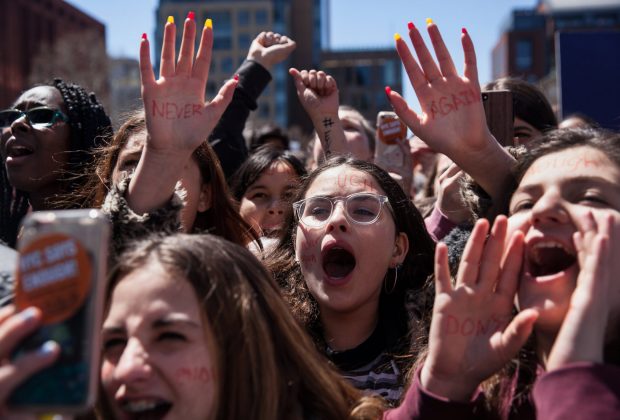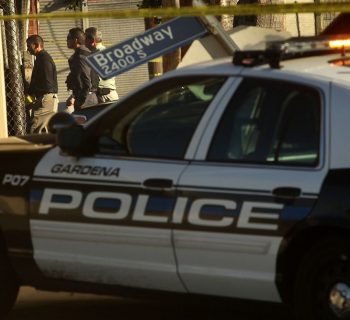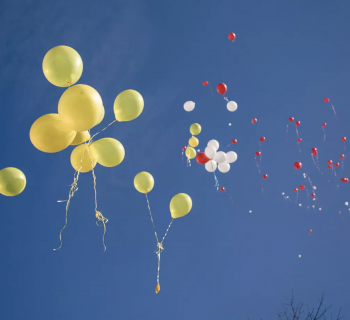By Sarah Maslin Nir ~ NY Times ~ April 20, 2018
Most of them were not yet born when students shot a dozen people to death inside Columbine High School in Colorado, an atrocity that sparked a national debate over guns exactly 19 years ago.
But on Friday, on the anniversary of the April 20, 1999, shooting, the several thousand high school students who walked out of schools across the city and beyond to rally against guns in Manhattan said they felt they lived in a world of near-constant Columbines.
The teenagers spoke angrily of active shooter drills since kindergarten, of backpack and locker searches, of mock lockdowns sitting in silence in classrooms with the lights turned out, as they gathered in protest in Washington Square Park. And they spoke of the numbing barrage of school shootings in America — by some counts more than 200 in the past two decades.
Caroline Castellano, 16, a sophomore at Hunter College High School in Manhattan, had only just recently heard the name Columbine. “So I did the classic internet search,” she said. “It really freaked me out really quickly.” Near her, with a pink Post-it note with the word “victim” written on it on her forehead, stood Kathya Rodriguez, 16, a sophomore at the High School of Fashion Industries, a public school in Chelsea.
Earlier this year, Kathya said, there was a scare at her school when a student brought in a weapon. (According to a New York City Department of Education spokeswoman, the weapon was an air gun, which police confiscated.) The situation made her realize her vulnerability, Kathya said. Why, she asked, didn’t Columbine “have a bigger impact on society?”

Lane Murdock, center, a student at Ridgefield High School in Connecticut, was one of the organizers of the national walkout. CreditJessica Hill for The New York Times
Many of the students said the February shooting that killed 17 people at Marjory Stoneman Douglas High School in Parkland, Fla., was their tipping point.
Friday’s protest, billed as the National School Walkout, was in New York City organized in part by Arielle Geismar, 16, a junior at Beacon High School, who said students from about 35 schools from the city and from New Jersey and Connecticut participated. More than 2,600 schools in every state joined in nationwide, according to the walkout’s website. On Friday afternoon, Arielle stood beside the park’s arched monument to George Washington, addressing the crowd.
“We have been practicing school lockdowns since kindergarten,” she shouted. “If we are old enough to be affected by gun violence, then you’re damn well sure we are old enough to have an opinion about it!”
She spoke of the killing of Stephon Clark, a 22-year-old black man who was shot to death by police in Sacramento last month, and the slaughter of 58 people by a gunman at a concert in Las Vegas in October, as part of the same continuum, taking head-on a criticism of the nascent teenage movement that, in focusing on mass attacks, it ignores the police shootings and gun crime that disproportionately target black people.
“We will not stop until 58 people can walk into a concert, 49 people can walk into a club, 20 first graders can walk into their classroom, 17 students can walk into their school, 12 people can walk into a movie theater, one black man can walk into his grandmother’s backyard,” she said, “and all of them can walk out.”
Locations for the demonstrations nationally ranged from a park in Chicago to the statehouse in Texas; it was the third nationally coordinated student protest in the months since the Parkland shooting.

The day’s protest was conceived by Lane Murdock, a sophomore at Ridgefield High School in Ridgefield, Conn. After Parkland, Lane started a Change.org petition that spread far beyond her town, which is less than half an hour from Sandy Hook, where in 2012, 20 elementary school students and six faculty members were shot and killed.
“It’s kind of surreal,” Lane said on Friday, as she and hundreds of her classmates walked out onto the school’s football field.
On the field with them was Jennifer DeJulio, a history and social studies teacher. “You teach these kids about ways people have worked to change our country. And now, watching them working to make change is amazing,” she said.
“I’ll be teaching this ten years from now,” Ms. DeJulio added.
In New York City, some schools like the private Packer Collegiate Institute had agreed to let students who had parental consent attend the protest. Fifth graders on up, accompanied by chaperones, filed out of the school in Brooklyn Heights en route to the protest on Friday morning. But other students arrived at the protest without permission slips, under threat of demerit, and fearful of academic repercussions.
The New York City Department of Education said that it would consider leaving school to attend the protest an unexcused absence. For some students, there would be consequences.
The crowd of students in Washington Square Park covered just about a quarter of the park, thinned perhaps by the education department’s threat, or by simple protest fatigue.

At Packer Collegiate Institute in Brooklyn, a private school, students were allowed to walk out with parental permission. CreditHolly Pickett for The New York Times
That did not stop Lorna Gregory, 15, a student at Pace University High School, from joining in on Friday. “This is considered cutting. I think I failed dance. I had a 97, and now I’ll have a 40 or something,” she said, standing on a bench in the park to see over the crowd of students. “It’s kind of worrying me a little bit, but I’m standing for a cause.”
(She may not need to worry: “We would not take account of school discipline in a circumstance of peaceful protest on a pressing matter of conscience and national debate,” said a spokesman for New York University, John H. Beckman. At Columbia University, any students “who face disciplinary action for peaceful protest will not be at a disadvantage in the Columbia admissions process,” according to Victoria Benítez, a spokeswoman for the school.)
On the C train on Friday, Zeny Gatdula was with a group of classmates she had drawn from the Professional Performing Arts School, their banners in their laps. “In humanities class we are taught about history, these great people who stood up for what they believed in, even when everybody was against them. And I think that’s the key in getting people to rise up,” she said.
She was 17 years old, she said, but in a month, she would be able to register to vote, a moment she was looking forward to, when she could become more than just a protesting voice. It was a sentiment shared widely across the protests, where in Manhattan and Ridgefield, teenagers filtered through the crowds with voter registration forms.
In Connecticut, the students’ goals were overt: On a fence by the football field was a sign that read, “Can’t hear us now? How about in 200 days?”
In 200 days it would be Nov. 6, the date of the midterm elections.
Source: Sarah Maslin Nir ~ NY Times







